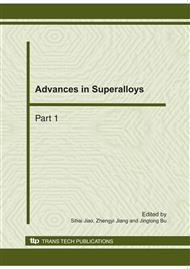p.314
p.318
p.323
p.327
p.331
p.336
p.340
p.345
p.349
Drag Reduction Effect of Dimples Arranged in Two-Dimensional Quasicrystal Structure
Abstract:
Rotating fluids experiments were carried out by CAP2000+ cone viscometer, to examine the drag reduction properties of dimples arranged in quasicrystal structure. The dimples were fabricated on the surface of duralunmin (LY12) plates. Compared with the periodic arrays, the dimples arranged in quasicrystal structure, especially the 12-fold quasicrystal structure, could significantly reduce the wall shear stress. And the relative drag reduction efficiency changes periodically with the depth of dimple. Flow-visualization experiment verified that the coherent effect of dimples arranged in quasicrystal structure and the fluids could efficiently inhibit the extending intensity of radial secondary flow, which strengthens the drag reduction effect.
Info:
Periodical:
Pages:
331-335
Citation:
Online since:
October 2010
Authors:
Keywords:
Price:
Сopyright:
© 2011 Trans Tech Publications Ltd. All Rights Reserved
Share:
Citation:


